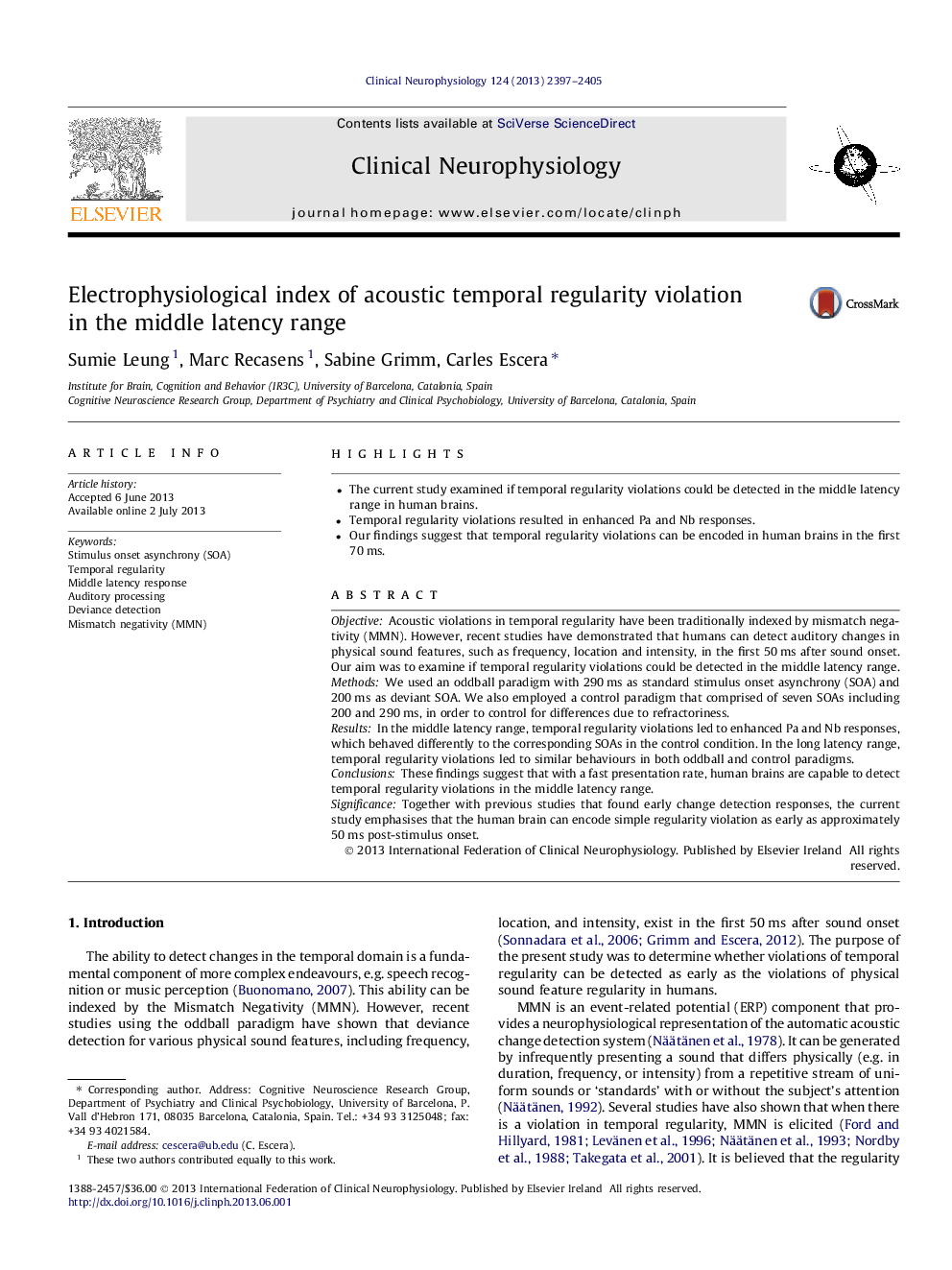| Article ID | Journal | Published Year | Pages | File Type |
|---|---|---|---|---|
| 3044217 | Clinical Neurophysiology | 2013 | 9 Pages |
•The current study examined if temporal regularity violations could be detected in the middle latency range in human brains.•Temporal regularity violations resulted in enhanced Pa and Nb responses.•Our findings suggest that temporal regularity violations can be encoded in human brains in the first 70 ms.
ObjectiveAcoustic violations in temporal regularity have been traditionally indexed by mismatch negativity (MMN). However, recent studies have demonstrated that humans can detect auditory changes in physical sound features, such as frequency, location and intensity, in the first 50 ms after sound onset. Our aim was to examine if temporal regularity violations could be detected in the middle latency range.MethodsWe used an oddball paradigm with 290 ms as standard stimulus onset asynchrony (SOA) and 200 ms as deviant SOA. We also employed a control paradigm that comprised of seven SOAs including 200 and 290 ms, in order to control for differences due to refractoriness.ResultsIn the middle latency range, temporal regularity violations led to enhanced Pa and Nb responses, which behaved differently to the corresponding SOAs in the control condition. In the long latency range, temporal regularity violations led to similar behaviours in both oddball and control paradigms.ConclusionsThese findings suggest that with a fast presentation rate, human brains are capable to detect temporal regularity violations in the middle latency range.SignificanceTogether with previous studies that found early change detection responses, the current study emphasises that the human brain can encode simple regularity violation as early as approximately 50 ms post-stimulus onset.
